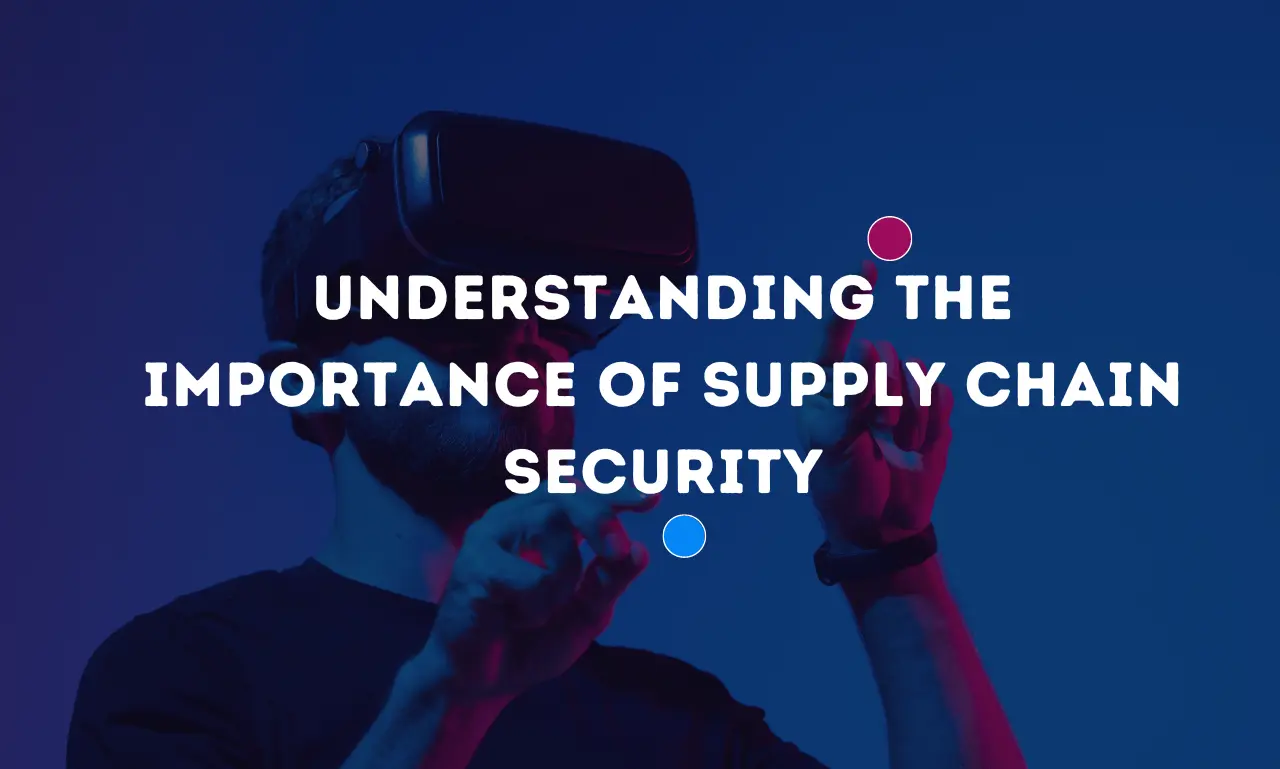Introduction: Understanding the Importance of Supply Chain Security?
Supply chain security is the management of threats related to vendors, logistics, and transportation from outside sources. It includes risk identification, analysis, and mitigation techniques for physical security and cybersecurity. Cybersecurity guards against malware attacks and unauthorized access to IT systems, whereas physical security deals with risks like theft and sabotage. Supply chain security best practices include:
- Tracing shipments.
- Using tamper-evident seals.
- Performing inspections.
- Putting cybersecurity techniques like network-level scanning and authenticated data flows into effect.
Security of the global supply chain is essential for preventing interruptions, securing intellectual property, and securing the secure delivery of products. HPE’s Trusted Supply Chain project improves end-to-end security by using trusted suppliers and servers with built-in security measures.
- Tracking shipments to keep an eye on their progress and make sure they safely arrive at their destination.
- We use package tamper-evident seals to identify tampering or illegal access while in transit.
- Inspect buildings and warehouses regularly to look for security flaws and ensure everything is in working order.
- We are implementing cybersecurity safeguards to guard against online attacks, such as network-level scanning and verified data transfers.
Why Do We Use Supply Chain Security?
Supply chain security is necessary for risk reduction, asset protection, operational continuity, thwarting cyberattacks, regulatory compliance, and reputational preservation. In an increasingly complex and interconnected world, organizations can guarantee the resilience and integrity of their supply chains by putting strong security measures in place and embracing best practices.
Risk Mitigation:
To protect the integrity of the supply chain, risks related to vendors, external suppliers, logistics, and transportation must be managed. Organizations may reduce the probability of disruptions and vulnerabilities through risk identification, analysis, and mitigation.
Asset Protection:
Products, resources, and intellectual property are just a few of the priceless assets that are included in the supply chain. Keeping the supply chain secure protects these assets from risks like theft, sabotage, and illegal access.
Maintaining Operational Continuity:
Preserving operational continuity and guaranteeing the prompt delivery of products and services depend on a safe supply chain. Supply chain disruptions may lead to delays, higher expenses, and declining client confidence.
Preventing Cyber Threats:
As supply chain operations grow more digitally oriented, cybersecurity is becoming essential to supply chain security. Maintaining company continuity and securing sensitive data are needed to defend against cyber threats, including malware attacks and data breaches.
Regulation Compliance:
Supply chain security compliance requirements apply to a wide range of businesses. Following these rules not only keeps businesses out of trouble with the law and money but also shows that they value moral business conduct.
Protection of Reputation:
An organization’s reputation and brand image may suffer significantly from a supply chain breach. Supply chain security is a critical component that organizations can prioritize to protect their reputation and keep stakeholders, partners, and consumers trusting them.
Best Tools for Supply Chain Security
Modern corporate operations depend heavily on supply chain security, and organizations use a range of solutions to manage and reduce risks in their supply chains. These solutions completely protect against attacks by combining cybersecurity and physical security measures. The following tools are often used for supply chain security:
- SecureLink
- ChainGuard
- ShieldChain
- SafeTransit
- FortifiedFlow
- GuardianLogistics
- SecureRoute
- DefenseLink
- protection
- SentinelSupply
- ArmorChain
- SafeHaul
- SecureCargo
- GuardedGateway
- ShieldedLogistics
Finding Hazards: Performing Thorough Risk Evaluations
Identifying possible threats and weaknesses via thorough risk assessments is essential to secure your supply chain efficiently. This entails examining the software, services, goods, logistics, and transportation components of the supply chain and its digital and physical elements. Organizations may create focused security plans to lessen dangers by knowing the particular risks connected to each link in the supply chain.
Cybersecurity Measures Implemented: Protecting Digital Assets
Cybersecurity is vital to supply chain security in the modern digital era. Organizations need strong cybersecurity safeguards to safeguard digital assets, such as proprietary information, intellectual property, and sensitive data. This may include putting access limits in place, encrypting data, and regularly doing penetration tests and vulnerability assessments to find and fix any security flaws.
Increasing Physical Security: Safeguarding Tangible Assets
In addition to digital security, physical security is a top priority for organizations to protect physical assets in the supply chain. This entails putting safeguards like tamper-evident seals in place, regularly inspecting warehouses and other facilities, and putting in place access controls to stop unwanted access. By strengthening physical security measures, organizations can reduce threats, including theft, sabotage, and tampering.
Controlling Third-Party Risk: Evaluating and Keeping an Eye on Outside Suppliers
Many businesses depend on outside suppliers and vendors as a component of their supply chain network. If not adequately controlled, these outside parties might provide security threats. To examine a third-party vendor’s security posture and guarantee that security rules and laws are followed, organizations must investigate the vendor thoroughly. Furthermore, continuous oversight of outside providers is necessary to identify and quickly resolve any security flaws or breaches.
Creating Incident Response Strategies: Getting Ready for Security-Related Incidents
Security events may still happen in the supply chain, even with the greatest intentions to safeguard it. Thus, organizations must build thorough incident response strategies to react to and mitigate security breaches successfully. It is necessary to set up explicit protocols and processes to detect, report, and respond to security events. Additionally, post-incident analysis must be carried out to pinpoint areas needing improvement.
Iterative Enhancement: Adopting a Security-Oriented Culture
Ensuring the security of the supply chain requires constant observation, assessment, and development. Companies need a security-focused culture in which all staff members are empowered and taught to put security first in their daily work. This might include establishing departmental coordination, offering frequent training and awareness campaigns, and keeping up with best practices and new security risks.
In summary, bolstering supply chain security for resiliency and prosperity
Securing the supply chain is crucial for protecting organizational assets, maintaining operational resilience, and guaranteeing business continuity in today’s quickly changing business environment. Organizations may reduce risks, guard against security breaches, and create a robust supply chain ecosystem that promotes long-term success and development by implementing best practices for increased supply chain security.
Enhancing Supply Chain Security for Resilient Operations: A Conclusion
In conclusion, firms must prioritise supply chain security if they want to maintain robust operations in the fast-paced commercial environment of today. Through the implementation of strong security protocols and the use of cutting-edge technology, enterprises may effectively manage risks, safeguard precious resources, and ensure uninterrupted operations. Investing in supply chain security is essential for long-term success, whether it is for tamper-evident seals to secure physical shipments or sophisticated cybersecurity solutions to protect digital assets.Businesses must be alert and proactive in addressing security issues as they negotiate intricate supply chain networks and contend with changing threats. Organisations may create resilient supply networks that can endure disruptions and adapt to changing circumstances by taking a comprehensive approach to supply chain security and working with reliable partners.
Supply chain security is the management of threats related to vendors, logistics, and transportation from outside sources. It includes physical security as well as cybersecurity methods to find, evaluate, and reduce supply chain threats.
Supply chain security is essential for risk reduction, asset protection, operational continuity, thwarting cyberattacks, regulatory compliance, and reputational preservation. In the linked corporate world of today, it guarantees the supply chain’s robustness and integrity.
Theft, sabotage, illegal access, cyberattacks (including malware and phishing), natural catastrophes, geopolitical crises, and noncompliance with regulations are common risks to the supply chain. These dangers have the potential to impair operations, result in losses of money, and harm reputation.
Supply chain security best practices include monitoring shipments, using tamper-evident seals, performing inspections, putting cybersecurity safeguards (including network-level scanning and authenticated data flows) into place, and working with reliable suppliers. Organisations should also place a high priority on regulatory compliance and risk management.
By creating thorough security plans, evaluating risks, putting strong security measures in place, encouraging a culture of security, and keeping up with best practices and new threats, organisations may improve supply chain security. Working together with stakeholders and industry partners is also crucial.
Technology is essential to supply chain security because it makes it possible to track and monitor shipments in real time. Integrate cybersecurity safeguards, automate security procedures, and improve supply chain visibility and transparency. To improve security, cutting-edge technologies like blockchain, IoT, and AI may be used.
By keeping up with pertinent laws and regulations, performing routine audits and assessments, putting security controls and safeguards in place. Keeping track of compliance efforts, and working with industry associations and regulatory bodies, organisations can ensure compliance with supply chain security regulations.
Several advantages may result from investing in supply chain security, such as decreased disruption risk, asset and intellectual property protection. Increased operational efficiency, better customer loyalty and trust, regulatory compliance, and reputation protection. In general, it enhances the organization’s competitiveness and resilience.
By guaranteeing the continuous flow of products and services, reducing risks that might impair operations, and facilitating prompt. Responses to security events or interruptions, supply chain security helps to maintain business continuity. Meeting client needs and preserving operational continuity depend on a robust and secure supply chain.
Organisations can enhance supply chain security by utilising a range of resources, such as cybersecurity frameworks. Government regulations and guidelines, industry standards and best practices, training and certification programmes. Consulting services, and platforms for collaboration with experts and peers in the industry. Businesses may improve their security posture and resilience by using these resources.




